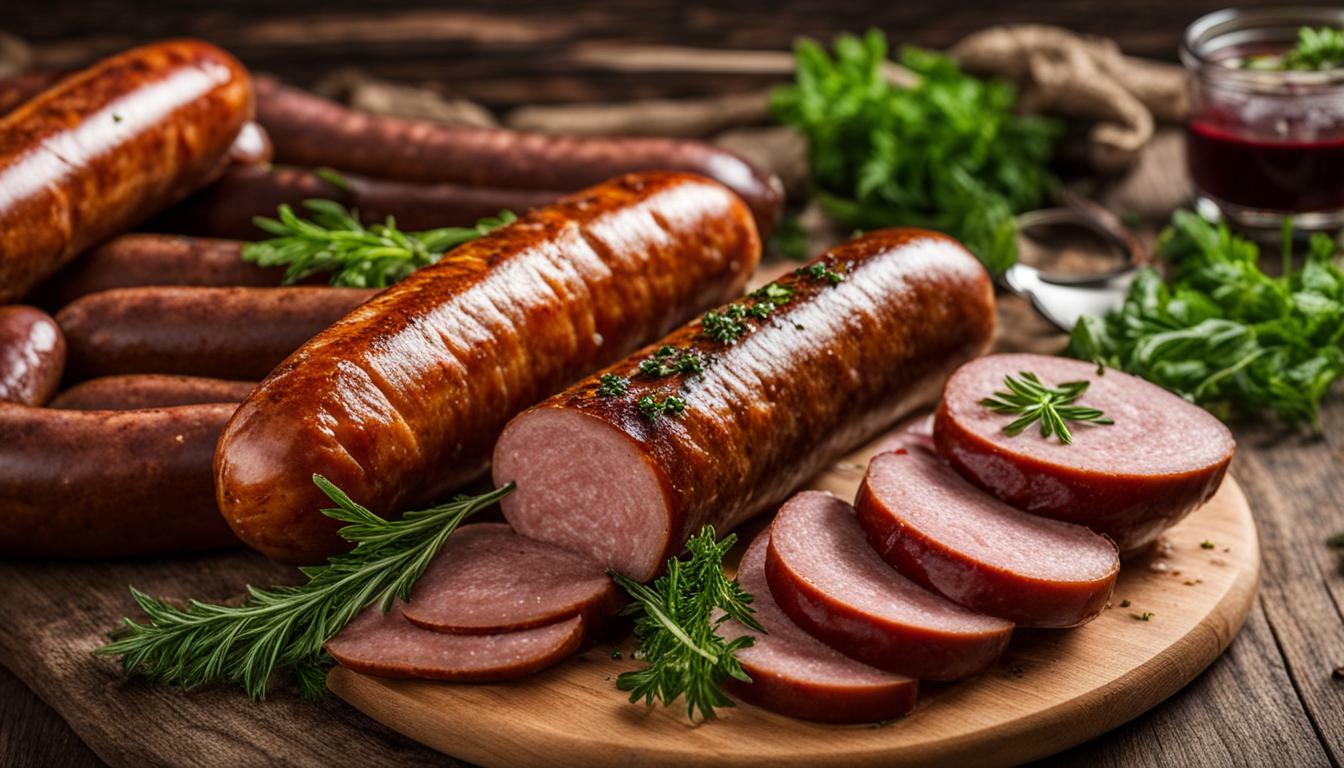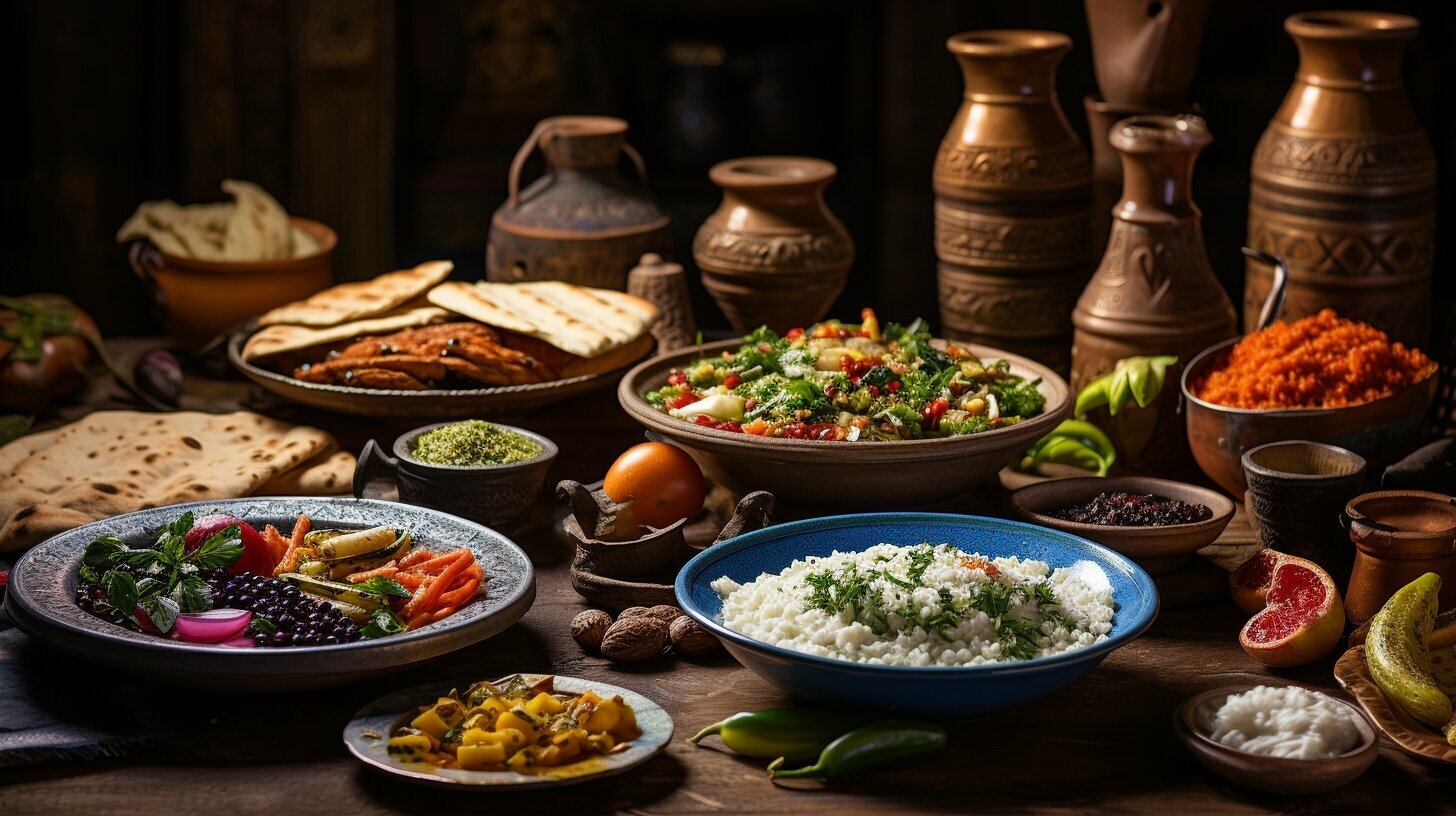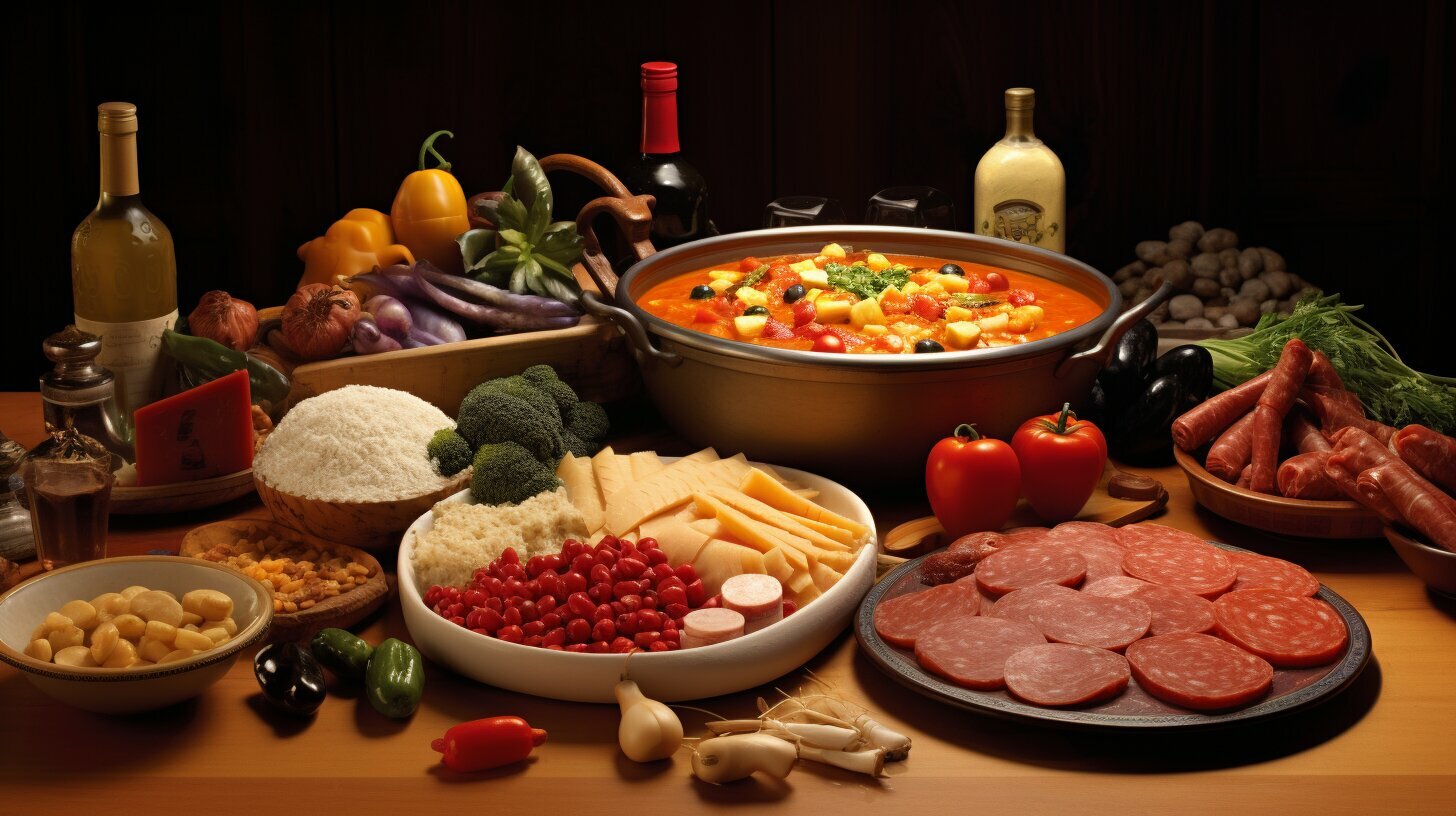When it comes to sausages, Polish sausage and Bratwurst are two of the most popular varieties. While they may seem similar at first glance, these sausages come from distinct culinary traditions and offer unique flavors and textures. In this article, we will explore the key differences between Polish sausage and Bratwurst, helping you to understand the characteristics of each and choose the one that best suits your palate.
Key Takeaways
- Polish sausage and Bratwurst are two popular sausages with unique flavors and origins.
- In this article, we will explore the ingredients, preparation methods, and traditional recipes of both sausages.
- Despite their differences, Polish sausage and Bratwurst share some commonalities in terms of ingredients, flavors, and cooking methods.
- By understanding the key differences between Polish sausage and Bratwurst, you can choose which sausage is the best fit for your culinary needs.
What is Polish Sausage?
Polish sausage is a popular type of sausage that originated in Poland. It is known for its delicious blend of spices and hearty texture. Traditionally made with pork, beef, or a mixture of both, Polish sausage is seasoned with a combination of garlic, marjoram, and black pepper, among other spices.
The preparation of Polish sausage involves grinding and mixing the meat with the spices and then stuffing the mixture into casings. The sausages are then typically smoked or cooked by boiling or grilling. The result is a savory sausage with a satisfying snap and a rich flavor.
Polish sausage is a versatile ingredient in many classic dishes, such as pierogis and cabbage rolls. It can also be enjoyed on its own as a snack or as part of a meal. A traditional Polish sausage recipe includes high-quality meats, such as pork shoulder and beef chuck, mixed with the traditional seasonings. However, variations may include different meats or modifications to seasonings to suit personal tastes.
Some characteristics that make Polish sausage unique include its bold flavor, hearty texture, and rich cultural traditions. Its popularity has also spread beyond Poland and can be found in various regions and cultures.
What are the characteristics of Polish Sausage?
Polish sausage is a type of sausage that is known for its:
- Bold flavor
- Hearty texture
- Use of pork, beef, or a mixture of both
- Seasonings like garlic, marjoram, and black pepper
- Preparation by grinding and mixing meat with spices, then stuffing into casings
- Smoking or cooking by boiling or grilling
Traditional Polish Sausage Recipe
A traditional Polish sausage recipe includes:
- 2 pounds pork shoulder, cubed
- 1 pound beef chuck, cubed
- 2 teaspoons garlic powder
- 2 teaspoons dried marjoram
- 1 teaspoon salt
- 1 teaspoon black pepper
- 1/4 cup ice water
- 1 package hog casings
To prepare the sausage:
- Grind the cubed pork shoulder and beef chuck using a meat grinder.
- Combine the ground meat, garlic powder, marjoram, salt, and black pepper in a bowl.
- Add the ice water to the mixture and stir until well combined.
- Stuff the mixture into hog casings and twist to form individual sausages.
- Smoke or grill the sausages until cooked through.
Enjoy your homemade Polish sausage in your favorite dishes or as a savory snack!
What is Bratwurst?
Bratwurst is a type of sausage originating from Germany. It is made from pork, beef, or a combination of the two, and is seasoned with a blend of spices such as nutmeg, coriander, and caraway. The name “bratwurst” comes from the German words “brät” meaning minced meat and “wurst” meaning sausage.
One of the defining characteristics of Bratwurst is its texture. It has a coarse grind and a snappy casing, making it a popular choice for grilling or frying. Traditional German recipes often call for cooking Bratwurst in beer, which gives it a rich, savory flavor.
| Characteristics of Bratwurst | Traditional Bratwurst recipe |
|---|---|
| – Coarse grind texture | – Cook in beer for added flavor |
| – Snappy casing | – Serve with sauerkraut and mustard |
| – Seasoned with nutmeg, coriander, and caraway | – Grill for a crispy exterior |
Bratwurst has become a staple in German cuisine, with various regional variations and cooking methods. From the classic grilled Bratwurst served at Oktoberfest to the hearty Bratwurst stew known as “Bratwurstgulasch,” this sausage has become a beloved part of German culinary tradition.
“Bratwurst is a staple food in Germany and an iconic dish throughout the world. It’s versatile, delicious, and brings people together over good food.” – German culinary expert
Similarities Between Polish Sausage and Bratwurst
Despite their distinct origins and unique flavors, Polish sausage and Bratwurst share several similarities in terms of preparation and cooking methods. Here are some of the commonalities:
| Similarities |
|---|
| Both sausages are made from ground meat that is mixed with spices and seasonings. |
| Both sausages are traditionally grilled or cooked on a stovetop or oven, although they can also be smoked or boiled. |
| Both sausages are commonly served with toppings such as sauerkraut, mustard, and onions. |
| Both sausages are popular in festivals and fairs, as well as in households across the globe. |
In addition to these similarities, both sausages have become an integral part of their respective cuisines, serving as a staple in meals and celebrations.
While there are differences that set Polish sausage and Bratwurst apart, the commonalities between the two sausages make them both a delicious and satisfying choice for sausage lovers.
Key Differences Between Polish Sausage and Bratwurst
While Polish sausage and Bratwurst share similarities in terms of ingredients and flavors, there are key differences that set them apart.
Meat
The type of meat used in each sausage is one of the most significant differences. Polish sausage is typically made with pork, while Bratwurst is usually made with a mixture of pork and beef.
Seasonings
Another difference is the seasoning. Polish sausage is traditionally seasoned with garlic, marjoram, and black pepper, while Bratwurst often includes nutmeg, coriander, and caraway.
Cooking Techniques
The cooking techniques for each sausage also differ. Polish sausage is often boiled or grilled, while Bratwurst is typically grilled or pan-fried with beer or onions.
In summary, the key differences between Polish sausage and Bratwurst lie in the type of meat used, the seasoning, and the cooking techniques. Understanding these differences can help you decide which sausage to choose for your next meal.
Conclusion
In conclusion, both Polish sausage and Bratwurst offer unique and delicious culinary experiences. While they share some similarities, such as the use of pork as the primary meat, each sausage has distinct flavors and culinary traditions. Polish sausage is known for its bold and robust taste, often seasoned with garlic and paprika, while Bratwurst is typically milder and seasoned with a variety of spices, including marjoram and caraway.
Whether you prefer to grill your Bratwurst or cook your Polish sausage in a skillet, both sausages are versatile and can be enjoyed in a variety of ways. Whether you’re a fan of German cuisine or a lover of Polish flavors, both sausages offer a delicious way to explore different culinary traditions.
So, the next time you’re looking for an easy and flavorful meal, consider trying Polish sausage or Bratwurst. Who knows, you might just discover a new favorite dish!
FAQ
Q: What are the key differences between Polish sausage and Bratwurst?
A: Polish sausage and Bratwurst have distinct origins and flavors. Polish sausage is traditionally made with pork, while Bratwurst is typically made with a combination of pork and veal. Additionally, Polish sausage is seasoned with garlic, marjoram, and other spices, while Bratwurst is seasoned with a blend of herbs such as parsley, nutmeg, and ginger.
Q: What are the similarities between Polish sausage and Bratwurst?
A: Despite their differences, Polish sausage and Bratwurst share some similarities. Both sausages are made using a combination of ground meats, are often grilled or pan-fried, and are beloved in their respective culinary traditions. Additionally, both sausages offer a delicious and savory flavor profile that is enjoyed by sausage enthusiasts worldwide.
Q: How are Polish sausage and Bratwurst traditionally cooked?
A: Polish sausage is commonly simmered in water or beer before being grilled or pan-fried. It is often served in a bun or alongside sauerkraut and mustard. On the other hand, Bratwurst is typically grilled or pan-fried until crispy and browned. It is often enjoyed on a bun with sauerkraut, mustard, and other toppings.
Q: Can Polish sausage and Bratwurst be used interchangeably in recipes?
A: While both sausages offer delicious flavors, they have distinct characteristics that may affect the outcome of a recipe. Polish sausage tends to have a strong garlic and marjoram flavor, while Bratwurst has a milder and slightly sweeter taste. It’s best to use the sausage specified in a recipe to ensure the desired flavors and textures are achieved.
Q: Are Polish sausage and Bratwurst gluten-free?
A: The gluten content in Polish sausage and Bratwurst can vary depending on the brand and recipe. It’s important to check the ingredient list or consult the manufacturer to determine if the sausage is gluten-free. Some sausages may contain wheat-based fillers or seasonings that contain gluten.
 Skip to main content
Skip to main content


